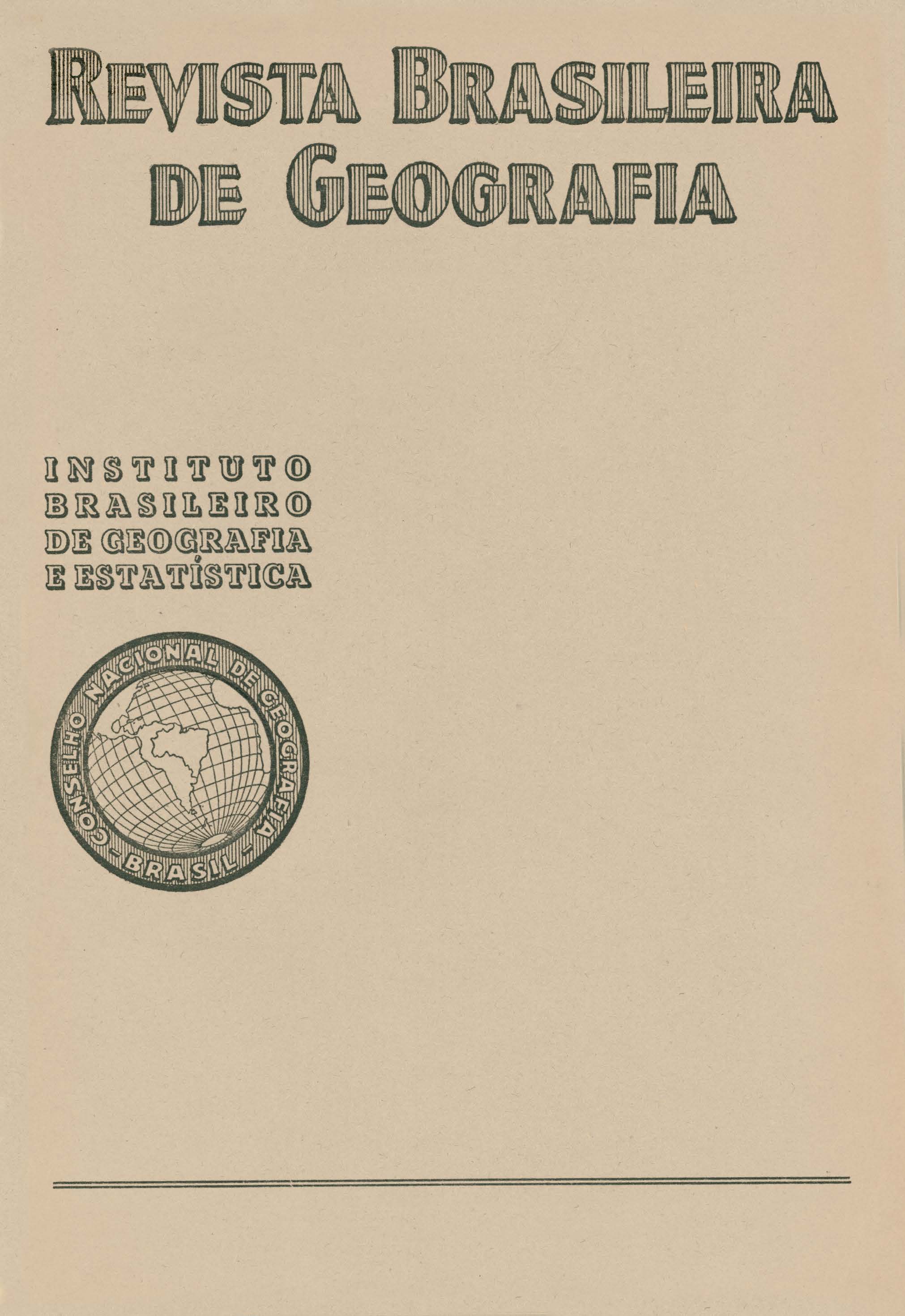Expansão do mercado urbano e transformação da economia pastoril
Palavras-chave:
Minas Gerais;, Economia agrícola;, Geografia agrícola;, Pecuária.Resumo
Considering that the elevation of the life's standard, due to the industrialization and urbanization, it brings always an increase in the diet "per capita" of the beef consumption, so we analyze the effects of the expansion of the Rio de Janeiro's market and also the industrial development of the Southeast Brazil in that organization of the cattle for abattoir at Minas Gerais.
Because Brazil is a traditional consumer of salty beef - "charque", "carne de sol", "carne de vento" - the cattle raising had represented just from the beginning of the colonization an important economical activity of the wide wilderness areas, where it became numerous, nevertheless they are of bad quality. The alimentary habit and the existence of wide creation areas, as we can see, they represent the great and rapid evolution of the livestock organization of the region, which became able to attend promptly the conditions created by the market's expansion. This are the transformations of the livestock economies in face of the "carioca's" market that we present in that work, analyzing those particularities in space and in time, and also to study the effects of the opening of the others circulation routes or the organization of new abattoir's centers that the region have had.
So, it became possible the increase of the livestock activity, traditional at the region of Minas Gerais, since the second half of the XIX century, because of the Rio de Janeiro's market and also because the decadence of the mineration activity, it had found new markets at the agricultural zones, that at this time were in development. In the last part of the century, the great population increase had accentuated the importance of the market, that was sustained by the railroad circulation, and began to influence the livestock economy.
The necessity of a new product, the fresh meat, replacing the "charque" it demands a better quality of the raw material, offering the conditions necessary to a specialization - beef cattle - that was realized along the railroads. For such specialization, however, the natural pasturage of a low nutritive value at this time they are wantings and insufficients. So it became necessary to form planted pasturage, - the winterfeed - and those were placed in the more fertile and humid areas, the woods areas. There was introduced a better quality of grass to feed the cattle. The grass must have a more nutritive value, among the others the "jaraguá" grass, the grass "gordura" and later will appear the "colonião". To that transformations comes also the renovation of the herds. Degenerated by 4 centuries of consanguinity, the national flock it can't satisfy the new market's exigencies, by that reason it began in the ends of the century, the importation of the Indian Zebu. The transformations that were be operated in accord to the "carioca" market they had as a center the Southern Minas and the "Triângulo Mineiro".
Between the years 1913 and 1942, when the cattle raising, impelled by the urban market was benefited with the opening of the external market, it was consolidated the initial transformations of the previous "period, those transformations would be more accentuated after the 1929 crisis. The winterfeed grew along the railroads, to the North direction of the state, attaining Montes Claros in 1926.- In function of the opening of the new cattle fat zones, the creation had increase and the same had happens to the zebu's dissemination.
Since 1942, the urban market had dominated for long time the organization of the herds economy. In this time it became forbidden by law the exportation by the Carioca and Paulista's slaughter-houses, that was the solution to assure the supplies, yet deficient of the cities, specially of the federal capital.
Between 1942 and 1962 the second great population moored of Rio elapsing of the industrial development and the consequent increase of the "per capita" rent, they were responsible for the opening of others cattle fat and creation's zones in Minas Gerais - Governador Valadares and in the new areas in the valley of Mucuri and Doce.
In the vast region that we speak about now, the distribution of the activities of cattle fat and cattle creation it elapses of three factors: the position relative to the railroad, the quality of the pasturage and the availability of the capital. The zones of cattle fat and of creation they present their own characteristics, that exists in the agricultural system, to the composition of the herd, and to the earth's use and the structure of the fund, accordingly to the process of commerce and transportation.
The implantation of the industrial economy in the state, specially developed in the last decade, that had shaked the organization of the herd activity established accordingly to the Carioca market. The opening of slaughter-houses in the same zone, the urban increase of Belo Horizonte and the opening of roads, specially the asphaltment of Rio-Bahia 1962, they had brought a great impact over the cattle raising of Minas Gerais, that find now new markets. As a consequence, the production system is now in evolution and the same occurs to the provisioning forms and to the·cattle raising organization.






